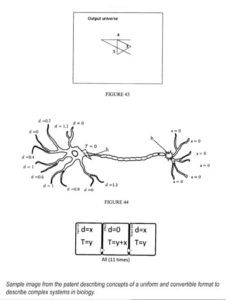Zetane Systems becomes a Deep-Tech Company with its patented method to streamline AI development using new format to represent data
High-tech start-ups excel at making incremental improvements to existing technologies; uncommon are those that acquire the rare title of being “deep tech” by inventing revolutionary new innovations that withstand scrutiny and pass strict thresholds for patentability. Today Zetane Systems marks its stake as a Canadian deep-tech company with the official announcement of its patent granted late last year , entitled Scalable Transform Processing Unit for Heterogeneous Data . Invented by Patrick St-Amant, the software company’s co-founder and CTO, the invention defines new means to distill complex systems in artificial intelligence (AI) into sets of basic rules. Rules are in the form of transforms embedded within computer processing units. The company implements its patented technology in its main software products for industrial applications of machine learning, the Zetane Engine and Viewer, both launched in the last quarter of 2020.

“By developing an intuitive and flexible computation unit to produce rich visuals with the software Engine, we provide an unparalleled level of access to the internal metrics of machine learning models and datasets. This makes a major step forward towards transparency that counters the well-documented ‘black-box algorithms’ problem. Adding rich visuals to our toolbox also provides new means for practitioners to reduce otherwise lengthy development times associated with guess-work while promoting deeper understanding and trust of AI in industry,” said Patrick St-Amant. At this time the transform processing units operate in the back-end of Zetane’s products. This will soon change given that the company will continue to support open-source and crowd-sourced strategies for innovation by making transforms more accessible to the tech community. Access to transforms will enable experts to improve on and define new transform rules that will help ensure software and hardware tools remain current and adapt to the future needs of the AI industry. That initiative will build on previous efforts at Zetane to promote open-source standards and the free exchange of innovation exemplified by the recent release of the Zetane Viewer. Forever free to download from the company website , this software enables experts and non-technical professionals to inspect the internal components of machine learning models and their interaction with data with unprecedented detail.
Born from a quest to find a universal language for mathematics
Research efforts that resulted in the patented innovation span over a decade and began as a side project while St-Amant was a university student in mathematics. The fledgling idea for the invention arose from contemplations unrelated to computer hardware. The inventor was instead set on defining a universal language in mathematics. Replete with hundreds of theorems and obscure languages to describe them, the field of mathematics lacks standard formats to represent abstract concepts. St-Amant sought to break concepts and theorems down to their most basic elements – the ‘atoms’ of concepts – to uncover basic units mathematicians could piece together to describe the mathematics of complex systems such as the laws of physics and molecular interactions during DNA replication. Realizing the usefulness of his idea in the abstract and math-focused field of AI motivated St-Amant to leave his teaching position and launch Zetane Systems
About Zetane Systems